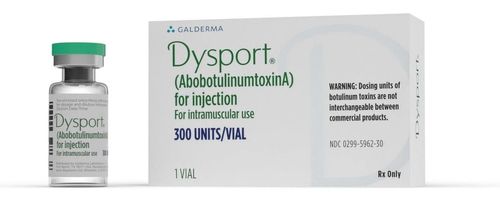This is an automatically translated article.
Spinal accessory nerve palsy is common after neck dissection or lymph node dissection, blunt or penetrating trauma to the lateral neck region, and cervical stretch injury. Spinal nerve palsy can lead to paralysis or dysfunction, including shoulder strain, muscle atrophy, and dyskinesia.
1. What is spinal accessory nerve palsy (SAN)?
Nerves act as a common pathway for an electrochemical nerve impulse called an electrical potential, which is transmitted throughout the body. Nerves connect the brain and spinal cord to other parts of the body and all organs. Cranial nerve XI, also known as the accessory nerve of the spine, controls the sternocleidomastoid and trapezius muscles:
The sternocleidomastoid muscle helps turn the head. The trapezius muscle manages shoulder movements, such as the act of shrugging your shoulders. The trapezius muscle is important for stabilizing the shoulder blades to provide a strong base for the arms. The accessory nerve is a cranial nerve that supplies the sternocleidomastoid and the trapezius muscle. It is considered the 11th of the 12 pairs of cranial nerves. The term "accessory nerve" generally refers to the nerve that supplies the sternocleidomastoid and trapezius muscles.
Spinal accessory nerve damage is most commonly caused by medical procedures involving the head and neck. Trauma can cause wear and tear on the shoulder muscles, the way the blade rotates, and weakness in the shoulder abduction and external rotation.
Cases of spinal accessory nerve palsy (SAN) in patients with head and neck cancer are often caused by cancer treatment, including surgery and radiation therapy.
Damage can occur to the nerve during surgical treatment, such as a lymph node biopsy or neck dissection. In some types of neck dissection, the nerve may be completely removed. If the nerve is only injured, it can recover after surgery in 4-12 months. If it is cut or removed, it will not be able to recover on its own. The trapezius muscle cannot be strengthened unless the nerve has a function to activate the muscle.
Long-term, SAN neuropathy can lead to:
Loss of muscle function; Adhesive bursitis (frozen shoulder); Rotor cuff impedance; Pain. All of these side effects can greatly affect your activities and quality of life. It is important that after surgery or radiation therapy, you begin a treatment plan to manage spinal accessory nerve palsy (SAN).
2. Causes of spinal accessory nerve injury
The accessory nerves of the spine can be damaged by neck trauma, traumatic injury to the arm or neck, even after surgical procedures such as lymph node biopsy, parotid gland surgery, surgery carotid artery surgery and varicocele.
3. Symptoms of spinal cord injury
The most common symptoms of spinal accessory nerve injury are:
Pain and weakness in the shoulder; Change in shoulder structure; Weakness when lifting; Drop shoulders; Trapezius muscle atrophy.
4. Diagnosis and treatment
The diagnosis of spinal accessory nerve palsy begins with a routine physical examination. Your doctor may use imaging techniques such as electromyography (EMG) and neurological testing.
Treatment of spinal accessory nerve palsy includes physical therapy. For patients who do not respond to conservative methods, surgery is considered for them. Surgical options include:
Neurosurgery; Nerve transplant; Nerve regeneration. Other treatment options include:
Tendon or muscle infusion to stabilize the shoulder blades, which are used for patients who have not responded to surgery or nerve repair. You may also be given a brace that stabilizes the shoulder blades. This brace is used to improve posture, promote range of motion, and relieve pain.
5. Attention when treating spinal accessory nerve palsy
While being treated for spinal accessory nerve palsy, it is important that you manage your pain. Talk to your doctor about your pain to come up with a management plan. Heat or ice should not be applied to the area where radiation has been used or where you have lost sensation in your skin after surgery, due to the risk of burning or swelling.
If your treatment plan involves radiation or surgery, be sure to talk to your doctor about your risk of spinal accessory nerve palsy and methods to treat this side effect.
6. Risks and Complications
Although thoracic fusion is a safe procedure, various risks and complications have been reported including:
Metal damage; Purulent adhesions; Flight of the bones; Pneumothorax; Pleural effusion; Thoracic outlet syndrome; Pneumonia ; Tubular fracture; Deep vein thrombosis.
7. How to take care of patients after surgery
Patients who have undergone thoracic fusion should follow some basic guidelines:
Wear slings and avoid using overly active objects for the first 6 weeks; Follow your therapist's instructions for activity and exercise during the healing process. It can take 6 months or up to 1 year for the shoulder to return to normal function.
In summary, spinal nerve palsy can lead to paralysis or dysfunction. Therefore, when you notice symptoms of suspected disease, you should go to a medical facility for examination and diagnosis. Early treatment will help you recover better motor function.
Please dial HOTLINE for more information or register for an appointment HERE. Download MyVinmec app to make appointments faster and to manage your bookings easily.













